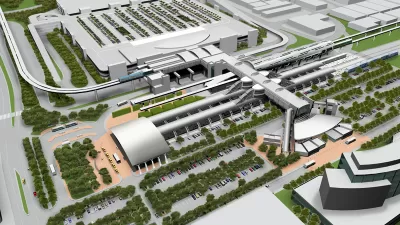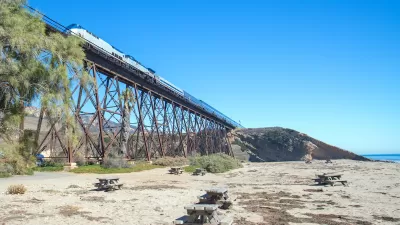According to a new study out this week by research group INRIX, urban traffic congestion in the U.S. plummeted last year by 30 percent over the previous year. Angie Schmitt summarizes the surprising findings, and investigates what the cause may be.
Released this week, INRIX's Annual Traffic Scorecard analyzed congestion on highways in America's 100 largest cities and found that 70 metropolitan areas saw declines in their traffic congestion in the past year. "In addition to high gas prices and poor economic performance, INRIX
attributed vanishing congestion in part to a decline in road
construction brought on by the completion of most stimulus projects, as
well as uncertainty around federal infrastructure funding and anemic
local and state budgets," notes Schmitt, who raises some additional questions about the true causes for the decline.
"National declines in driving or increases in transit ridership were not mentioned as contributing factors. Still, it's somewhat mysterious. Was the economy really so much worse
in 2011 than 2010? Growth did slow down some in that time, but it was still positive. Or is something else going on here - like the 'decoupling' of driving from economic fluctuations?"
INRIX's study provides a lot to chew on. In addition to the nationwide statistics, the scorecard also ranked the individual U.S. cities with the worst traffic congestion, the most congested corridors, and the best and worst times to commute.
Summarizing the results in The Atlantic Cities, Tyler Falk reports that Honolulu has won the dubious prize of most congested city. "INRIX changed their methodology
this year look [sic] at travel time for individuals rather than overall
congestion, which rocketed Honolulu to the top of the list (from 37th
last year)." Los Angeles and San Francisco rounded out the top three.
FULL STORY: Analysts: Traffic Congestion Down 30 Percent Last Year

Planetizen Federal Action Tracker
A weekly monitor of how Trump’s orders and actions are impacting planners and planning in America.

Maui's Vacation Rental Debate Turns Ugly
Verbal attacks, misinformation campaigns and fistfights plague a high-stakes debate to convert thousands of vacation rentals into long-term housing.

San Francisco Suspends Traffic Calming Amidst Record Deaths
Citing “a challenging fiscal landscape,” the city will cease the program on the heels of 42 traffic deaths, including 24 pedestrians.

Amtrak Rolls Out New Orleans to Alabama “Mardi Gras” Train
The new service will operate morning and evening departures between Mobile and New Orleans.

The Subversive Car-Free Guide to Trump's Great American Road Trip
Car-free ways to access Chicagoland’s best tourist attractions.

San Antonio and Austin are Fusing Into one Massive Megaregion
The region spanning the two central Texas cities is growing fast, posing challenges for local infrastructure and water supplies.
Urban Design for Planners 1: Software Tools
This six-course series explores essential urban design concepts using open source software and equips planners with the tools they need to participate fully in the urban design process.
Planning for Universal Design
Learn the tools for implementing Universal Design in planning regulations.
Heyer Gruel & Associates PA
JM Goldson LLC
Custer County Colorado
City of Camden Redevelopment Agency
City of Astoria
Transportation Research & Education Center (TREC) at Portland State University
Jefferson Parish Government
Camden Redevelopment Agency
City of Claremont




























